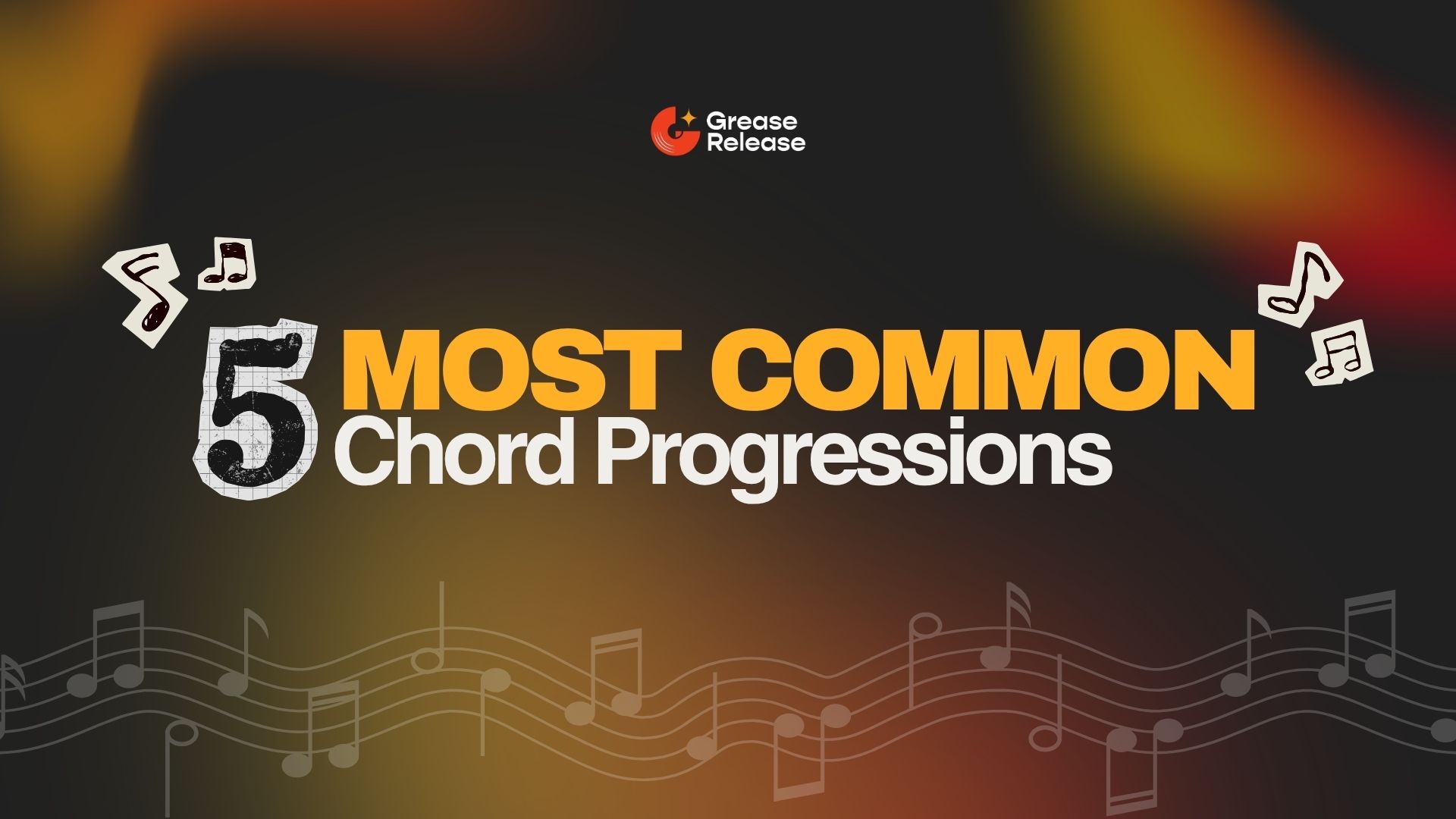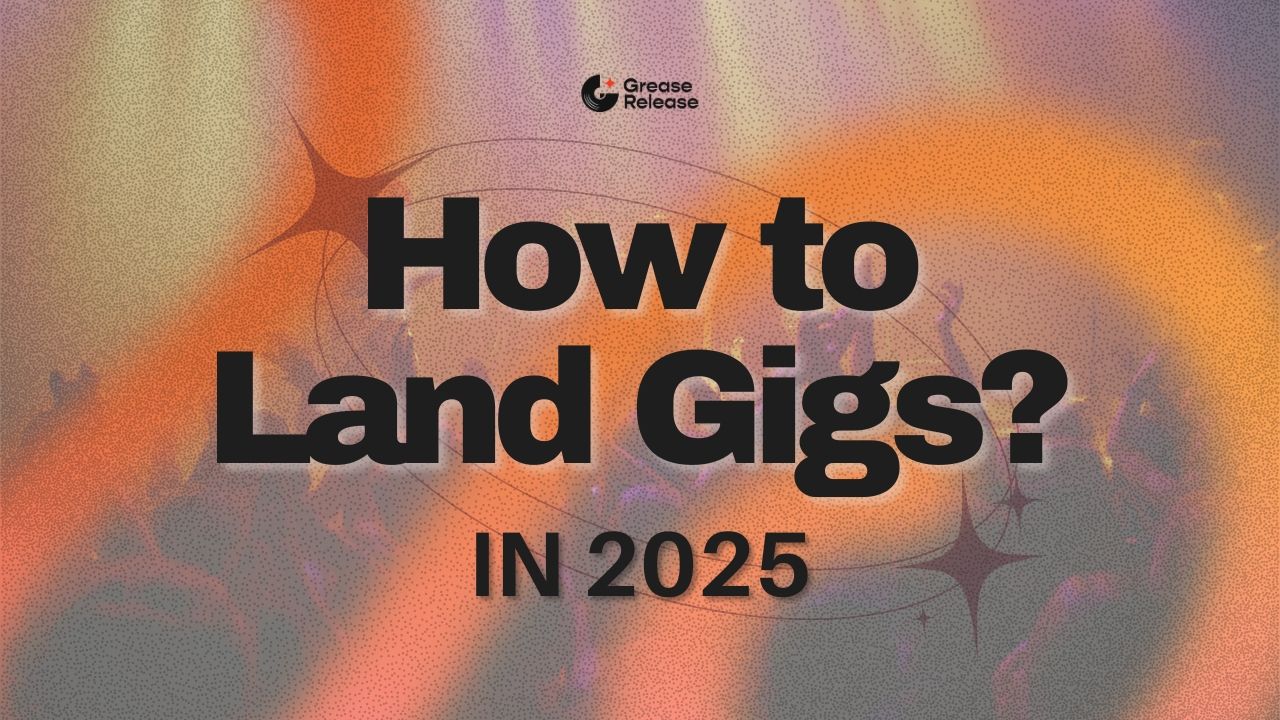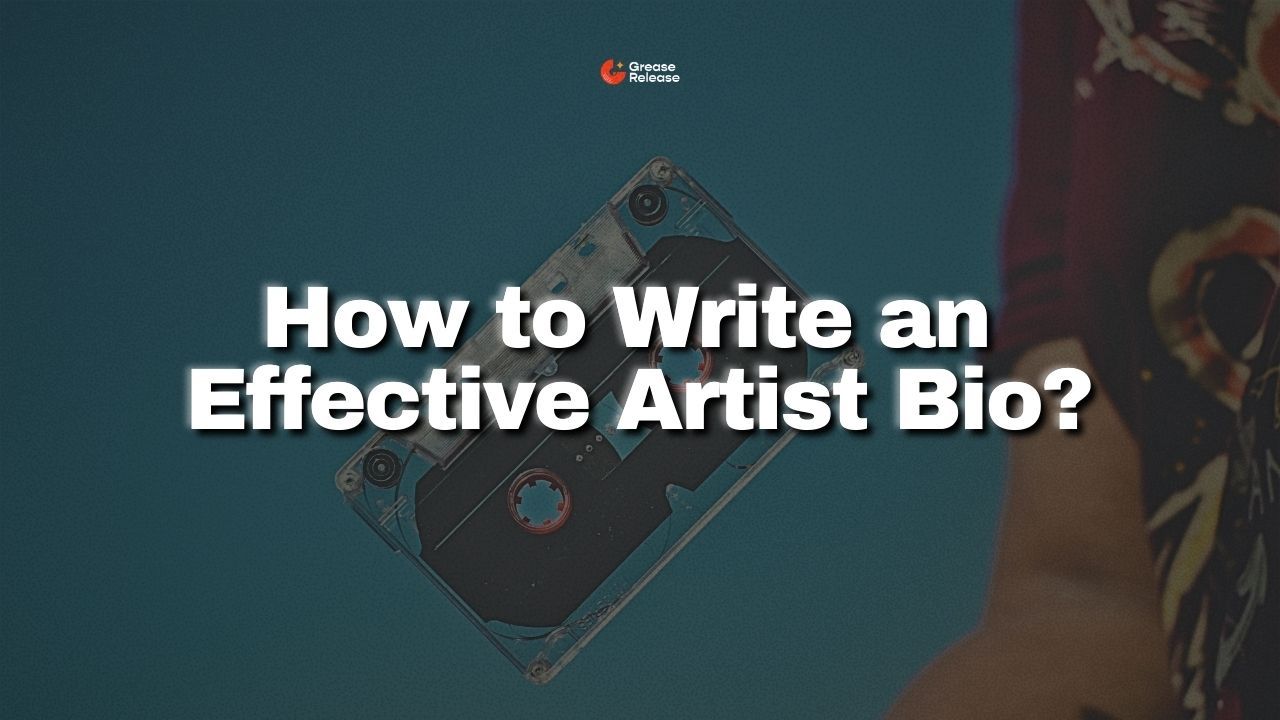
How to Write an Effective Artist Bio?
Nov 26, 2025
Your artist bio is often the first thing people read before they listen to your music. Curators, journalists, promoters, and even fans rely on it to understand who you are and what your sound is about. A clear, simple bio can create instant interest, while a vague one does the opposite. It also helps SEO clearly piece together who you are, what you do, and where your music fits online.
This guide breaks down exactly what to include and how to structure it, so you can write a bio that feels authentic, professional, and easy for anyone to understand.
- What are the Core Elements of an Effective Artist Bio?
- Artist Bio Templates/Examples
- FAQs
- Conclusion
What are the Core Elements of an Effective Artist Bio?
1. An Engaging Opening Line
The first line of your bio is the most important part. It sets the tone for everything that follows. In one sentence, you should introduce your name, what kind of artist you are, and what makes you interesting. Think of it as your elevator pitch. Keep it simple, direct, and clear.
- Start with your artist name or band name
- Mention your genre or sound style
- Add one unique hook that helps people remember you
- Keep it short and clear
For example: “XYZ is an Austin-based indie pop artist known for blending intimate storytelling with warm acoustic textures.”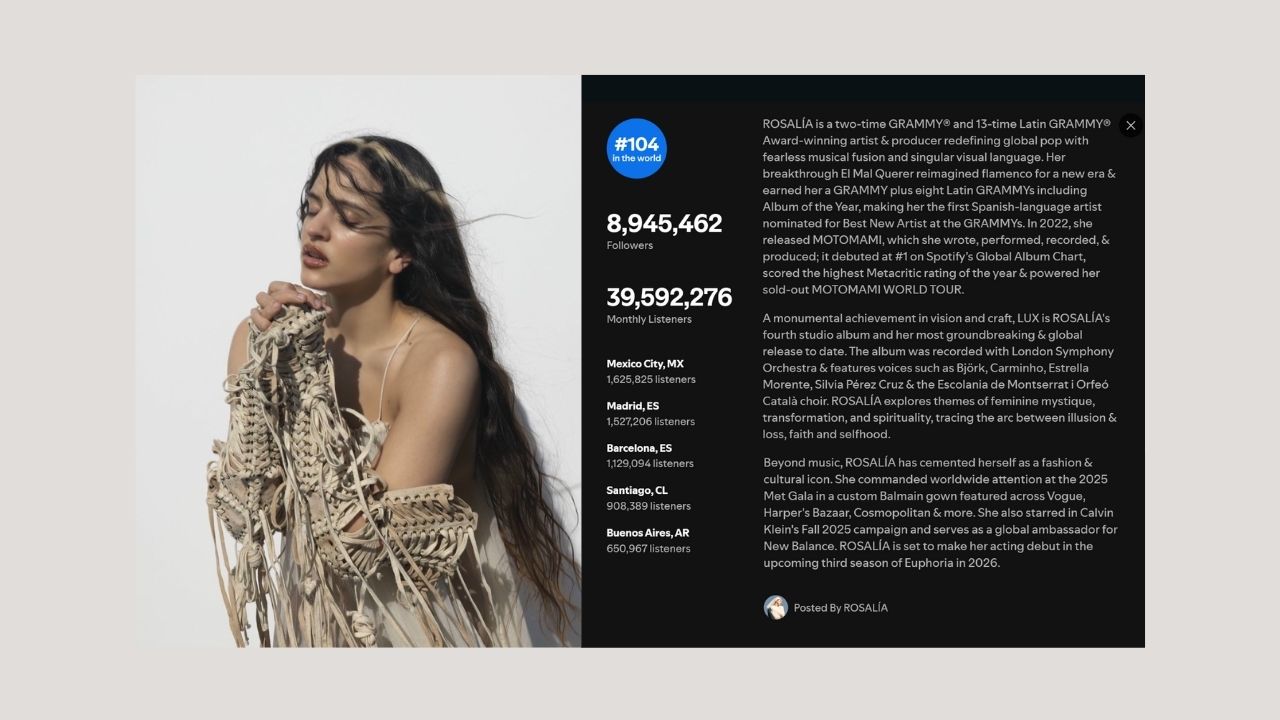
2. Background and Story
This is where you give people a little context about how you became the artist you are today. The trick is to keep it relevant. Your entire childhood story is not needed. Talk about the moments that shaped your music or helped you grow. Include points like:
- When you started making music
- What influenced your sound
- How your journey evolved
- Any key moments that pushed you forward
It does not need to be dramatic or complicated. It just needs to be authentic.
3. Describe Your Sound Clearly
People reading your bio might not have heard your music yet. Your job is to help them understand what your songs feel like. Include the following:
- Your genre and subgenre
- Your influences
- The mood or atmosphere of your music
- What makes your sound different
For example: “Her music blends soft electronic textures with soulful vocals, creating a warm and dreamy sound that sits somewhere between indie and alt pop.”
Try to avoid vague phrases like “my music cannot be described” or “I make music that speaks to the soul”. Everyone says that. Be specific.
4. Career Highlights and Achievements
This is the section that gives you credibility. You do not need a hundred achievements. You do not even need a big award. Just list the most important things that show your growth. Pick 2 to 4 key achievements:
- Major releases
- Streams or milestones
- Festival appearances or notable shows
- Press coverage or interviews
- Playlist adds
- Collaborations
The rule is simple. You don’t need to include everything. Include only the strongest and most recent highlights.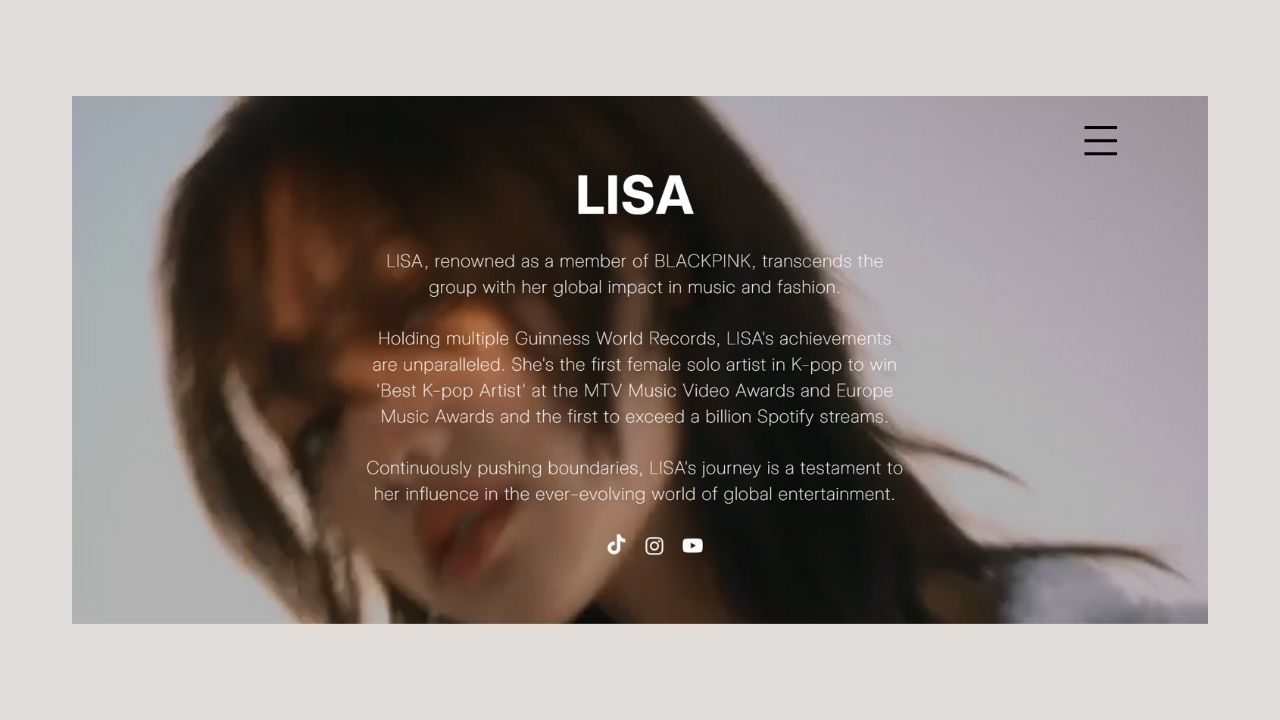
5. Social Proof (Optional but Powerful)
If someone notable has praised your music or if a blog has featured you, include a small quote or mention. Social proof is effective because it conveys to the reader that others already recognize the value in what you do. Try to include:
- Press quotes
- Testimonials
- Recognitions
- Co-signs
Do not force it if you don’t have anything yet. This section is optional and can be built on as you go.
6. Call to Action
A lot of artists forget this part. Your bio is not only meant to inform people, but also to guide them. Make sure to end your bio with a simple call to action. Make it clear and easy.
- “Listen to the new single on all platforms.”
- “Follow the artist on Instagram for updates.”
- “Catch their next live show in your city.”
7. Keep It Updated
Your bio is not a one-time task. Every time you release something new, reach a milestone, or change your direction, your bio needs a refresh. Outdated bios are one of the biggest reasons artists lose credibility. Keep a reminder to revisit your bio every few months and update it.
Artist Bio Templates/Examples
Here are two easy templates that you can just directly copy, paste, and customize!
Template 1: Solo Artist
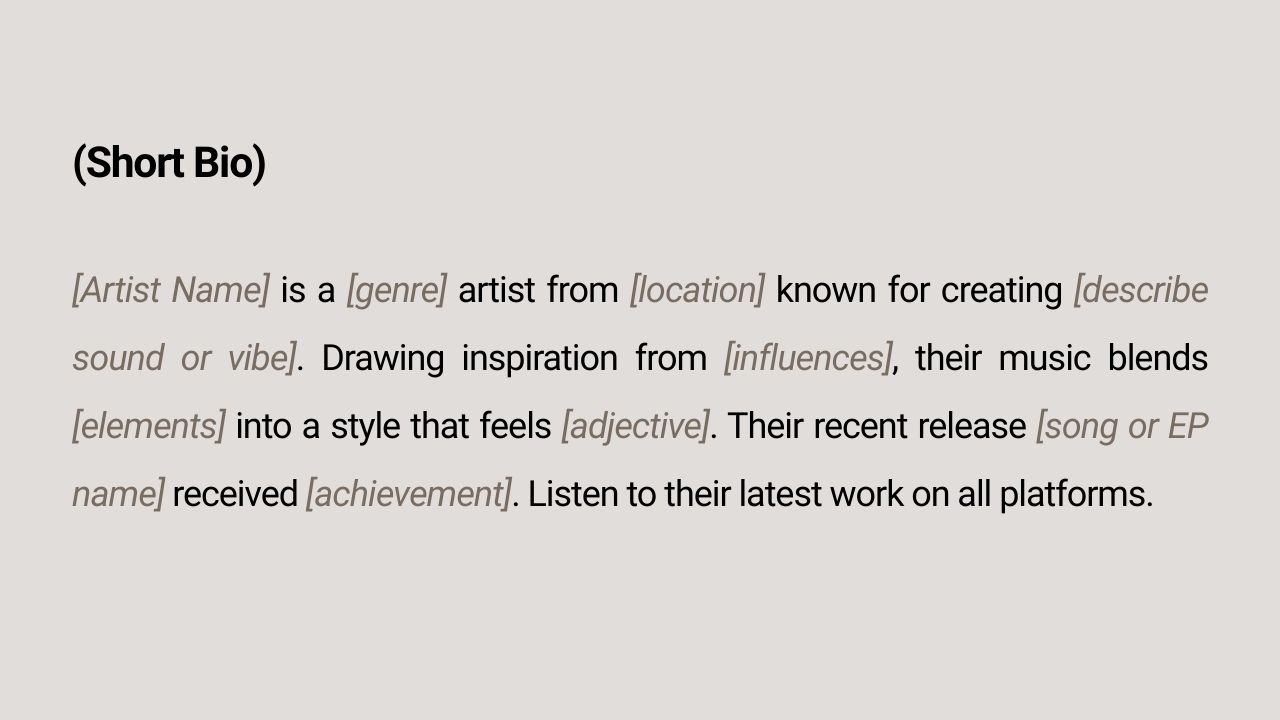
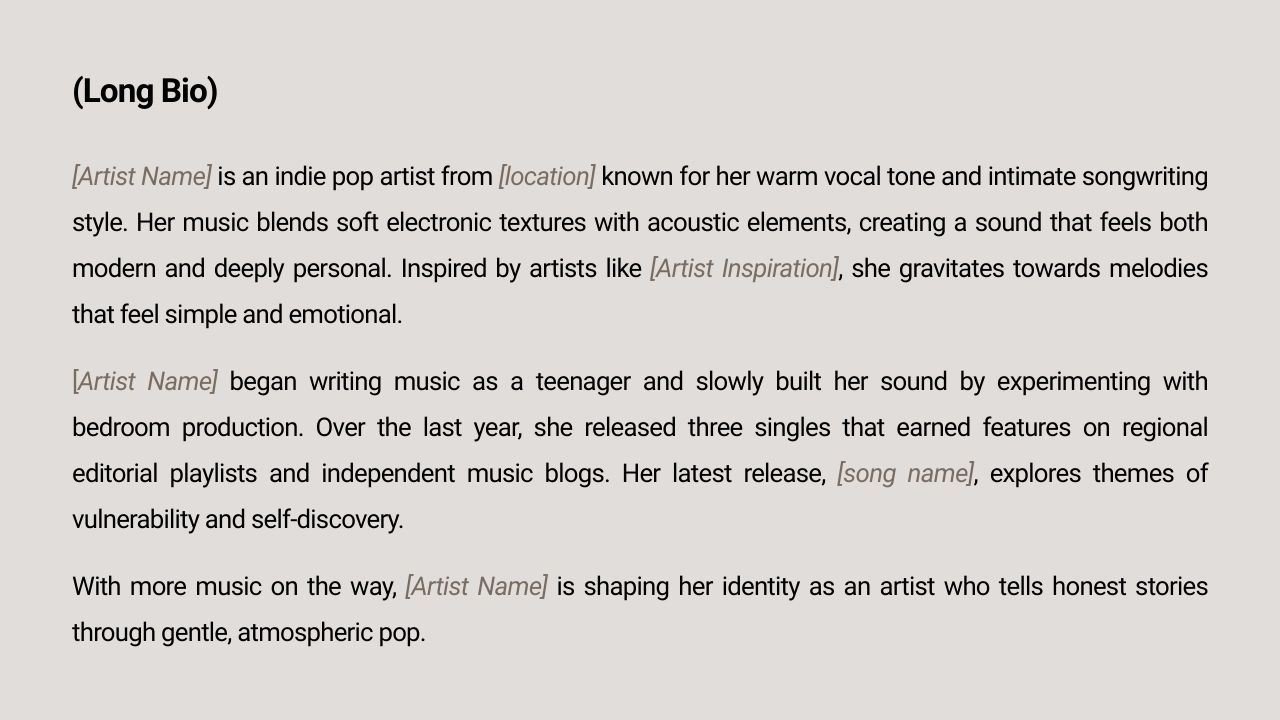
Click here to check out the full downloadable template!
Template 2: Band or Group
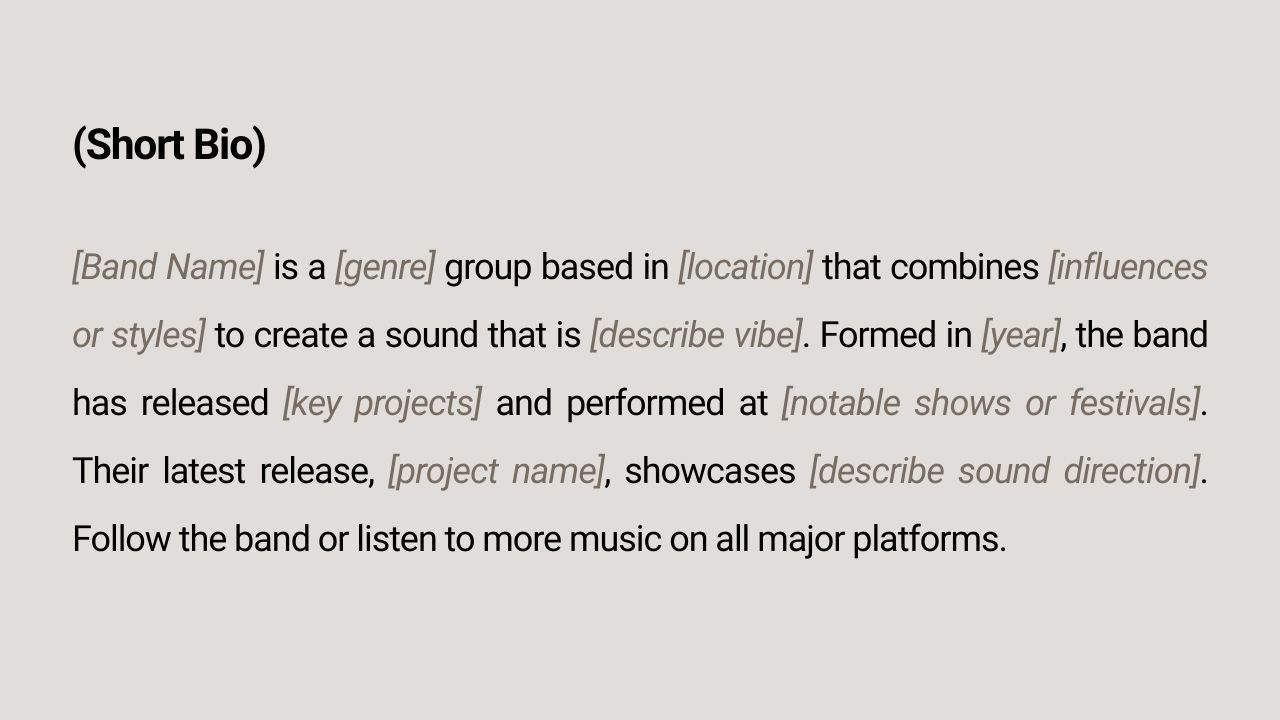
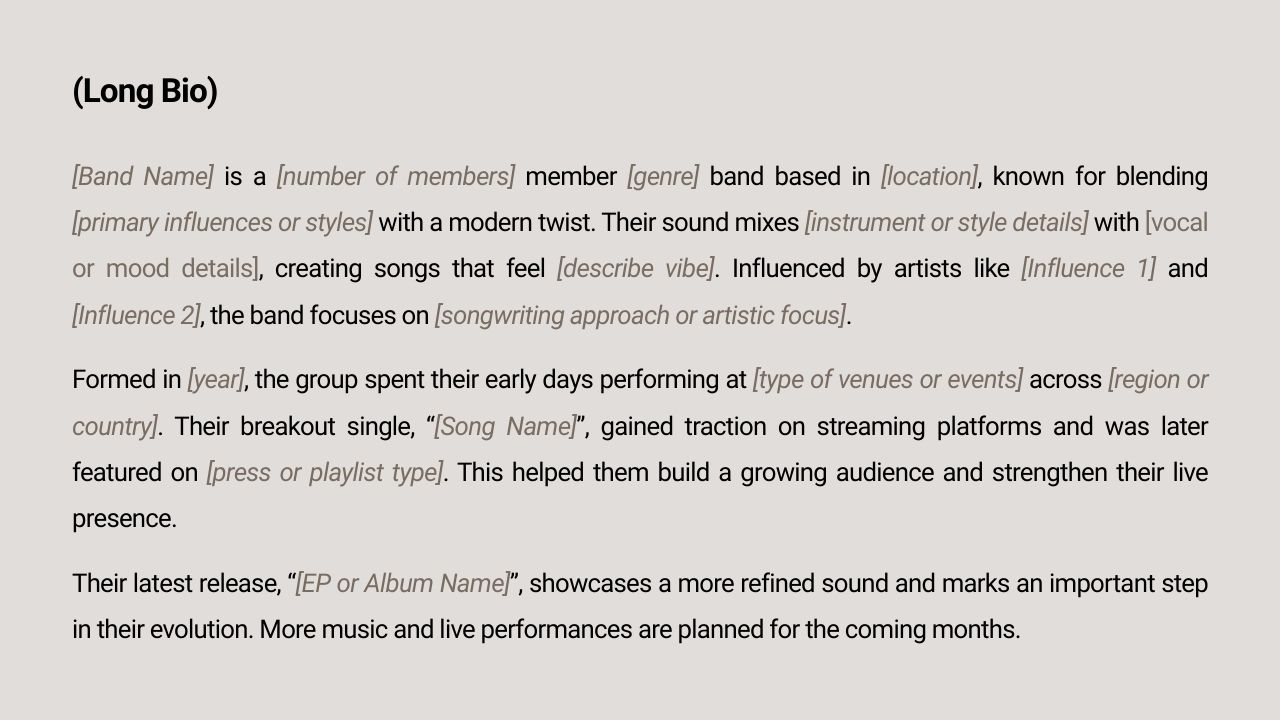
Click here to check out the full downloadable template!
FAQs
1. Should I write my artist bio in first person or third person?
Third person is generally better because it sounds more professional and can be reused by the press and curators. First person is fine for social media.
2. How often should I update my artist bio?
Update it every time you release something new, hit a milestone, or evolve your sound.
3. What to add in my artist bio if I have no achievements yet?
Focus more on your sound, your story, and what you are working on next. Everyone starts somewhere.
4. How many achievements should I include in my artist bio?
Two to four strong highlights are enough. Quality over quantity.
5. Should I include personal stories or details in my artist bio?
Only if they genuinely add context to your music or artistic identity.
Conclusion
A strong artist bio helps people connect with your music quickly and provides a reason to pay attention. You do not need fancy language or a dramatic life story. You only need clarity, personality, and a structure that highlights what matters. Keep your bio updated as you grow, so it always reflects who you are at the moment.
A well-written bio supports your pitches, strengthens your brand, and helps new listeners understand you faster.
We at GreaseRelease, have a bunch of curators on our network who are looking for new & exciting music to push on their massive playlists. If you make music and want to reach a wider audience, check out our submission platform and get a chance to reach millions of listeners! Submit your tracks now!
Don't miss my newsletter!
Join me on a music entrepreneurship journey with new tips and tricks delivered straight to your inbox.
We hate SPAM. We will never sell your information, for any reason.


